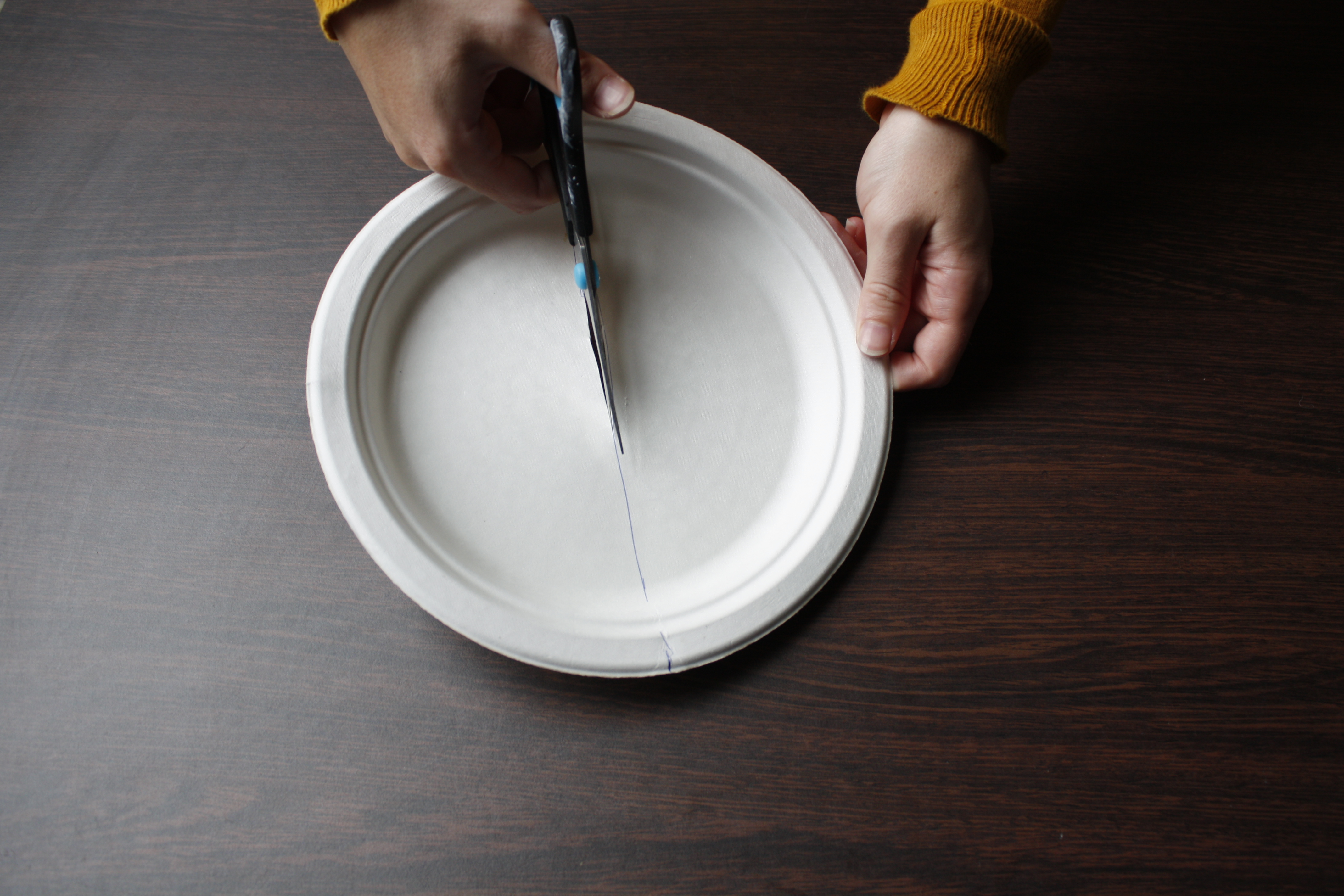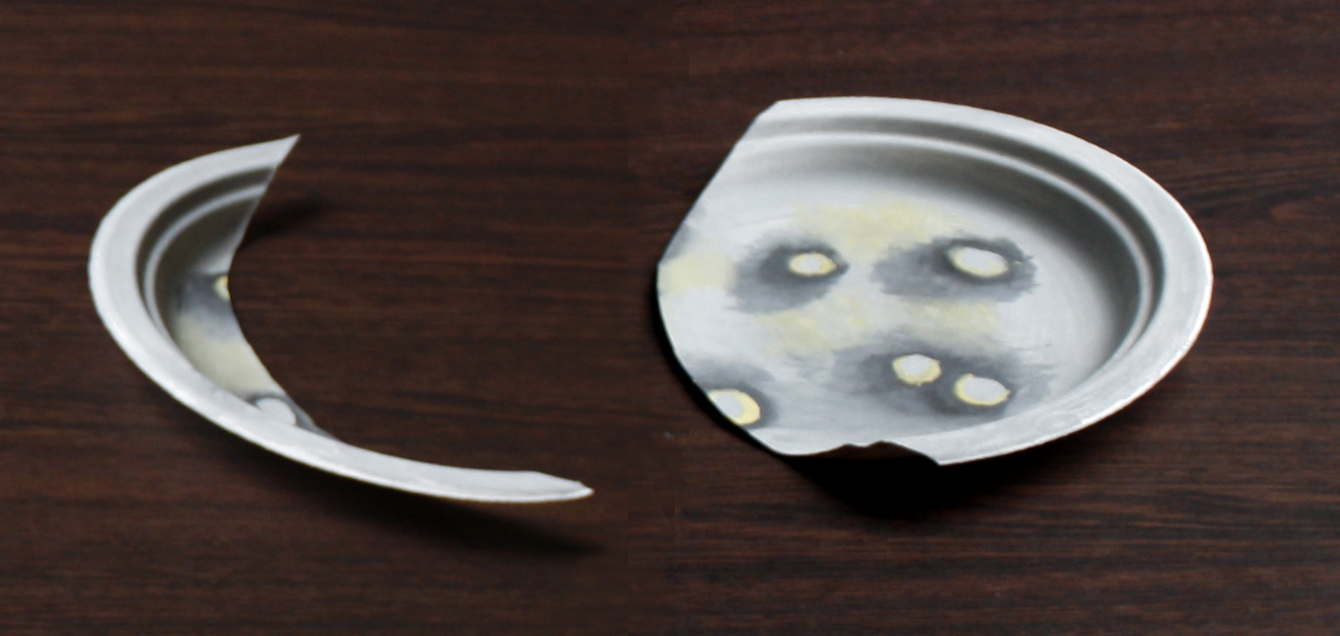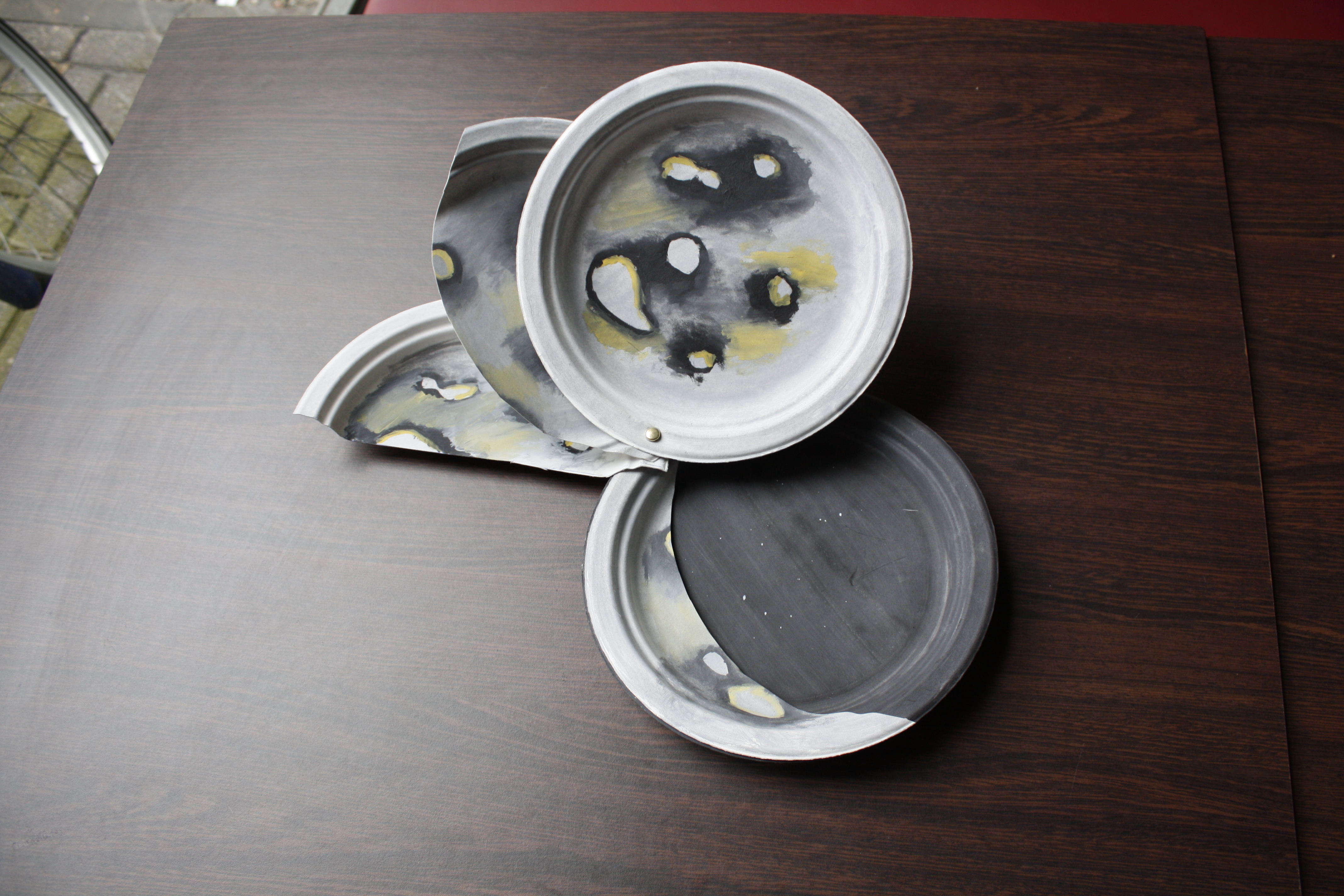In this activity, students colour and cut cheap paper plates to form a handy reminder of the phases of the moon.
Paper Plates: Moon Phases
 Brief Description
Brief Description Materials
Materials-
3 and a half paper plates per student
-
Markers
-
Crayons or paints
-
Pencils
-
Rulers
-
Hole punch
-
Scissors
-
Small paper fasteners
 Learning Objectives
Learning ObjectivesIn this activity, students will learn about the the movement of the Moon relative to the Earth, the lunar cycle and the phases of the Moon.
 Background Information
Background InformationPhases of the Moon:
- Full Moon: The Moon is said to be full when the Sun shines on it, lighting up the half that we can see. When the Moon is full, it is halfway through its monthly orbit of the Earth. This moon often appears a rich yellow when it is full and sits low in the sky. This colour is due to the fact that we look at it through the thicker, dustier part of the atmosphere that is close to the ground.
-
Waxing Crescent Moon: The black area is the night on the Moon, where the Sun is not shining. The brighter area is the day on the Moon, where the Sun is reflecting brightly off its surface. The line on the Moon between the night and the day is called the 'Lunar terminator’. The bright area, just visible on the edge of the dark limb, is called ‘earthshine’. This is caused by the sunlight reflecting off Earth’s oceans and lighting up some of the darkness on the Moon.
-
First Quarter Moon: When the Moon is one-quarter of the way around the Earth in its monthly orbit we see a quarter of it lit up from our place on Earth. However, half of the Moon is lit up by the Sun shining on the Moon’s surface at this point.
-
Last Quarter Moon: The Moon is three-quarters of the way around the Earth in its monthly orbit, and we see a quarter of it lit up from Earth. However, half of the Sun is shining on the Moon's surface at this point. From the Northern Hemisphere, all of the sunlight is now on its left-hand side and from the Southern Hemisphere, all of the sunlight is now on the right-hands side.
-
Waning Crescent Moon: At this point, the Moon has travelled almost all the way around the Earth once and is almost a New Moon. During the New Moon the Sun’s light is shining only on the far side of the Moon, so we cannot see it at all from Earth.
 Full Activity Description
Full Activity DescriptionStep 1
Students will colour one plate black. This plate represents the new moon. Leave this plate whole. (Image 1)
Step 2
Paint two plates like the full moon. They can be painted white, yellow or grey. Students can add craters, dark areas or any other details as they wish. (Image 1)

Step 3
Cut one plate in half. These will be the first and last quarter moon. Colour it in using the same colour as the full moon plates. Each student will use only half of the plate, so two students can share one plate. (Image 2)

Step 4
Show students how to find the centre of a plate by gently folding one of the full, coloured plates in half at the edges or by making a tiny mark at the top and bottom of the plate using a ruler placed in the centre of the plate circle. (Image 3)

Step 5
Using a pencil, show students how to lightly trace an arc from one mark to the other. Cut from one mark to the other in a crescent as smoothly as possible. The small section will be the crescent moon, the large part of the plate will form the gibbous moon. (Image 4)
Note: Check the student's arcs before they begin cutting.

Step 6
You are now ready for assembly! Place the black moon on a table, then stack each plate on top in the following order: crescent, quarter, gibbous, full. Hold the pile of plates together and punch a hole in all layers at the top, making sure the hole goes through each plate.
Note: You will have to double check this for younger students or do it yourself.
Step 7
You can now review the lunar phases using your assembled booklet! Students can also write the name of the phases on the plates. (Image 5)

Step 8
View the complete 29-day cycle of the Moon by turning it upside down so that the lit side of the moon is on the opposite side.
 Additional Information
Additional Information-
Crescent comes from the Latin word cresco, meaning ‘to grow’.
-
Gibbous comes from the Latin word gibbus, meaning ‘hump on the back’.
-
Phase comes from the Greek word phaino, meaning ‘to appear, to bring to light’.
-
Waning comes from the Middle English word wanien or wanen, meaning ‘to lessen’.
-
Waxing comes from the German word wachsen, meaning ‘to grow’.



 Keywords
Keywords Connection to National Curriculum
Connection to National Curriculum License
License Attachments
Attachments Downloads
Downloads


